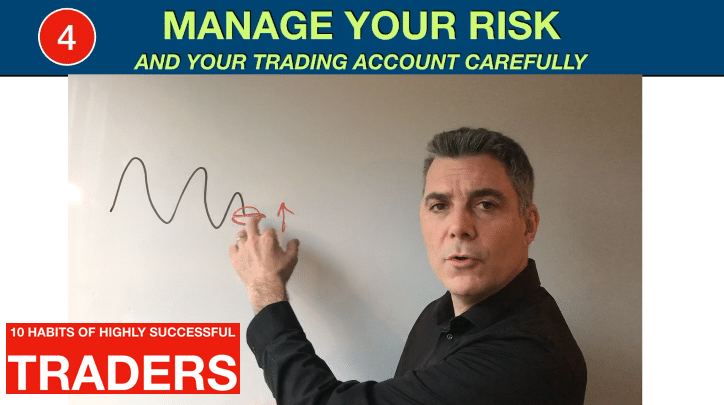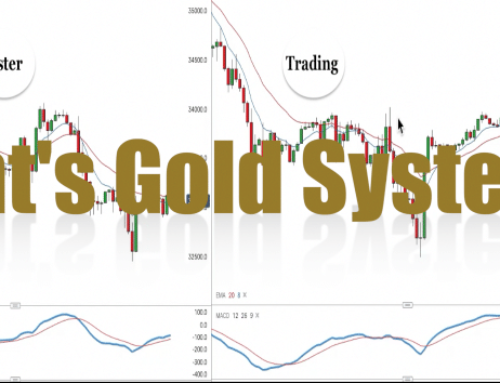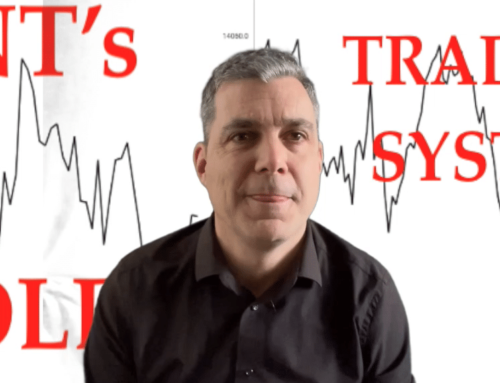One of the hidden challenges in trading is that in order to trade profitably you must be able to find trades where you can sensibly manage your risk (potential losses).
This may seem like a dull subject to you but if you don’t manage your risk properly then you will never be profitable in the long run.
It is probably the last area of trading that I looked at when I was learning but I now consider it to be absolutely the most important part.
Most traders have heard of the phrase, “Let your winners run and cut your losses short.” This is what the experts describe as the secret to successful trading.
The question that I asked when I was learning to trade and heard this phrase was “How?” This is what I am talking about here!
Trade like you are running your own business
Traders are effectively risk managers. We are small business owners. We must manage our trading just like we would a business.
Our trading account is our lifeline and it connects us this our dream. We need to risk part of it in order to participate in the rewards and to grow our account but we need to manage our risk carefully.
Whenever we take a trade then we are actually considering placing three orders rather than just one. We may only be placing one order in that moment but we need to place it with three orders in mind. We are playing an order to buy or sell now or at a certain defined level in the future. This is our trade entry. We are placing an order to take profits in the future (this is our target). We are also placing an order to exit for a loss (our stop loss).
Most trading software nowadays allows us to place all three orders at the same time if we want to or we can place them separately. However we need to have all three orders planned at the time of entry. This is what enables us to manage our risk on a trade and our potential reward to risk ratio.
So, what do we do, just keep our stop loss as close as possible to our entry? No, we can’t do that because the market will eat us alive. Price tends to populate places on the chart where it has been before.
Price is constantly testing for value. It goes down to see what buying interest there is and it goes up to see if there are people willing to sell there. This gives us a yo-yoing effect in price action. I call it the price zigzag.
We need to place our protective stop (stop loss) somewhere that price is most unlikely to go in it’s zigzagging before giving us our profit. This is one of the key skills in trading.
In most scenarios price is at a level where, if we were to place our protective stop randomly, and close to our entry price, we would lose by taking a trade in either direction.
What I am saying here is that we would be effectively taking a trade where our chance of winning is zero!!
Take for example a stock that is soaring up. When we see this happening, can we just jump in and buy the stock? No, we can’t. The reason is because we must have a way of knowing when we have made a bad decision. This is the market level at which we get out for a loss. We manage our losses by having this level defined before we place our trade.
Our risk on a trade is the difference between our entry price and the price at which we get out if we are wrong, multiplied by our position size.
An example would be, we buy at $10 and we get out at $9 if we are wrong. We buy 1000 shares and therefore our risk is $1×1000=$1000.
When a market is zooming off in one direction or another there is no place on the chart for us to pick out an obvious level to place our protection. This means that our risk could be huge!
Big price bars are often followed by reversal bars that are almost as big. Therefore our stop loss would need to go at the bottom of the last market low.
In order to be consistently profitable in trading a trader must look for trades where the profit target on a trade is at least as big as the risk. Either that or their win rate needs to be exceptionally high.
When taking a trade in this particular situation we would need to have a huge profit target to make it worthwhile. This may be unrealistic.
So we need to manage our risks on trades. How do we do that? We look for market conditions that provide a good level of probability. We wait for the market to pullback from a high or a low and then we enter when the market is at a good value price.
Risk management also extends beyond the risk of a single trade – Taking multiple trades at once
We need to make sure that our trading system has a built-in risk management system. We need to make sure that our system is designed with account preservation and growth in mind.
For day traders this means having a maximum daily loss limit that is smaller than your daily take profit target. You must absolutely under no circumstances keep on trading when you have hit one of these daily limits.
This way, over time you will make money as long as your trading system has a reasonable win rate.
Also important is to have a limit to the number of trades that we take at any one time and having a defined amount that we risk per trade. Our position size must be determined by the risk on each trade.
Let me give you a couple of examples of that:
In one or two of my trading strategies I have Protective Stops (Stop Losses) which are fixed at a certain number of points away from my trade entries.
The distance between my entry price and the protective stop determines my risk. Let’s say for simplicity purposes that this distance is 15 points. When I go long using this strategy then my protective stop will be 15 points below my entry price. If price subsequently goes down to the stop level then I sill exit the trade for a loss.
The stop distance is fixed in this instance and the level of loss that I sustain is dependant on my position size.
If my position size is £50 per point then my risk will be 15 points x £50=£750. On this type of trade I will always risk the same amount and my position size will remain constant.
My position size will always be dependant on the size of my trading account. I risk a maximum of 1% of my trading account per trade (based on allowing myself a £750 risk per trade I need an account size of £75k). Position Size=(Account size*1%)/(Distance between Trade Entry and Protective Stop)
In some of my other strategies the distance between my trade entry price and my protective stop will vary depending on the market climate (volatility), the conditions that the market is in and previous price action. For instance, the risk my be between 10 and 25 points.
Using this type of strategy I need to adjust my position size on every trade (using the same equation as above) prior to taking the entry otherwise my risk per trade will be different.
Eg Using a position size of £50 per point and Stop distance from entry of 25 points this would leave my risk as £50×25=£1,250. This may be more than 1% of my account size and therefore more than I would like to risk.
However if the Stop distance on a particular trade is 10 points then 10*£50 per point=£500. This may be less than I am prepared to risk for that particular setup based on my account size. If I wish to keep my risk per trade at £750, then based on a 10 point stop my position size should be £750/10=£75 per point.
All of my strategies have a positive expectancy. Over a period of time I expect them to make money but this doesn’t mean that I can be reckless with my money management tactics. I need to respect the markets and therefore respect the fact that I need to calculate my position size on each trade prior to entry in order to keep my risk per trade the same.
I then recalculate my risk per trade at the end of each week (or at the end of a specified number of trades) depending on how well I have executed my strategy and therefore grown (or shrunk) my overall account size over that period.
Sometimes I do have more than one trade running at any one time. If this is the case then I keep my overall account risk at <1%. I will need to manage the position size on each trade accordingly.
For example. I will always take the same overall account risk and also look to risk the same amount per trade. If I intend to take two positions at once and I wish to risk £750 in total based on my account size, then my position size for each of the two trades will be based on risking £375 on each individual trade. I will work out the position size based on the Stop distance and £375 trade risk for each of the two trades. I rarely take more than two trades at once but when I do then I will reduce my position size per trade accordingly.
In terms of daily limits, I may cap my daily risk at 2% of my account size. This doesn’t affect my risk per trade but it will mean that with each series of trades where I risk 1% then two consecutive losses of 1% will mean I end my trading for the day.
All of these rules mean that even when my systems have the occasional drawdown periods I stay in the game and am ready to take advantage when my system returns to winning ways!







Leave A Comment